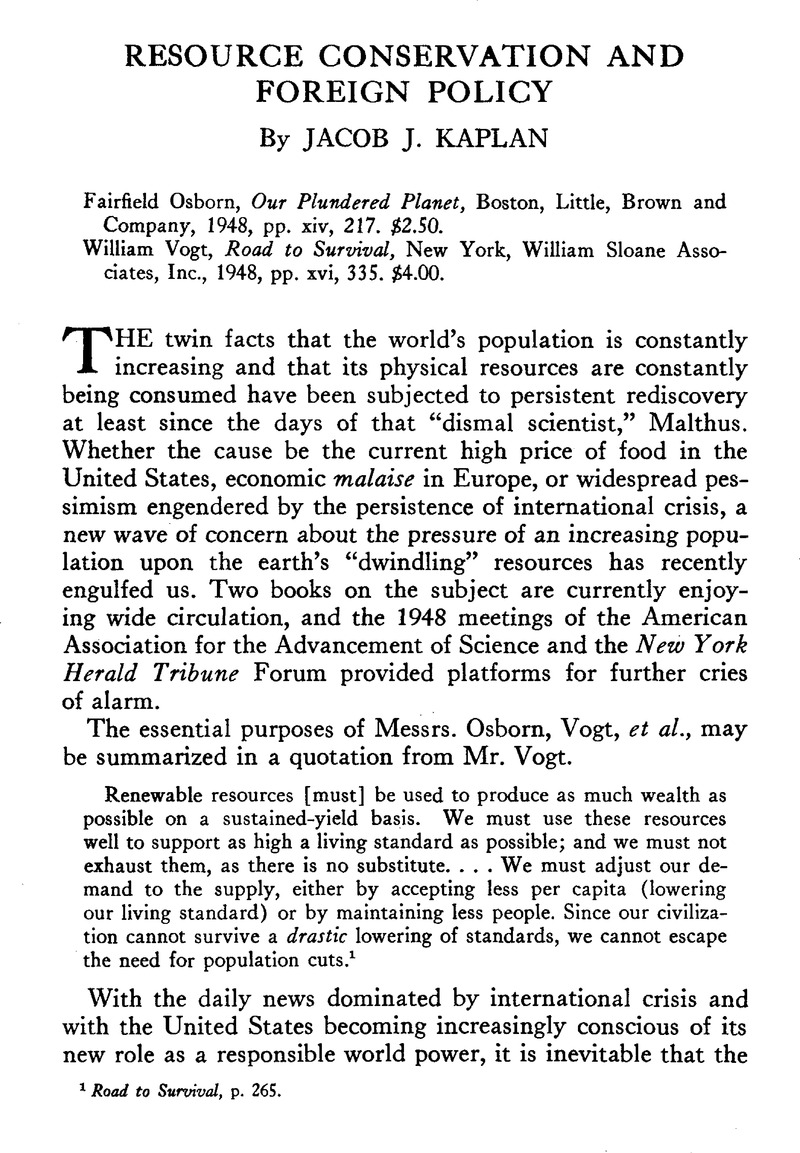Published online by Cambridge University Press: 18 July 2011

1 Road to Survival, p. 265.
2 For example, in the period 1930 to 1934, an average of 340 million acres of wheat were harvested annually. If world average yields were at the average Belgian level during this period, the total world harvest would have been 2.75 times as large; at the average Japanese level, it would have been almost twice as large; at the average French level, 1.66 times as large. Yield per acre in the United States was only at the then existing world average level. Obviously, even with the state of the science of agriculture fifteen years ago, the existing arable acreage would have produced much more food per acre than it did, if only sufficient capital (fertilizer, equipment, etc.) and labor were applied to that acreage.
3 It may seem curious that non-renewable resources are not mentioned. The obvious explanation is that to include them would sharpen the dilemma between human welfare and absolute conservation. Obviously, a sustained-yield exploitation of our coal or petroleum resources would create havoc in our whole industrial civilization. But why, one feels impelled to ask, should non-renewable resources be subjected to man's rapaciousness?
4 For a more complete discussion of the divergence of social and individual costs and their significance for conservation policy see Bunce, A. C., Economics of Soil Conservation, Ames, Iowa, Iowa State College Press, 1942.Google Scholar